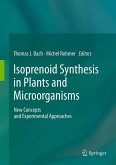Most plants strongly rely on the co-existence with microorganisms: both groups benefit from these symbioses. It has been shown that a large number of specific genes in plants and microorganisms are only activated during these interactions. Of course, various microbes also act as pathogens.
Interactions between plants and microorganisms are often located on plant surfaces, such as leaf cuticles, seeds and mainly on the roots. The communication between plants and microbes is the main topic treated in Plant Surface Microbiology. The text discusses the signaling within a symbiosis or the molecular differences between symbiotic and pathogenic microorganisms, the role of microorganisms in growth and development of plants or in plant protection against deleterious agents and the interactions of microbes with genetically modified plants. Further contributions are devoted to: the analysis of bacterial communities in the rhizosphere; microbial population genetics; various aspects of mycorrhizal symbiosis; functional genomic approaches and the use of microorganisms as bio-indicator of soil disturbance.
Interactions between plants and microorganisms are often located on plant surfaces, such as leaf cuticles, seeds and mainly on the roots. The communication between plants and microbes is the main topic treated in Plant Surface Microbiology. The text discusses the signaling within a symbiosis or the molecular differences between symbiotic and pathogenic microorganisms, the role of microorganisms in growth and development of plants or in plant protection against deleterious agents and the interactions of microbes with genetically modified plants. Further contributions are devoted to: the analysis of bacterial communities in the rhizosphere; microbial population genetics; various aspects of mycorrhizal symbiosis; functional genomic approaches and the use of microorganisms as bio-indicator of soil disturbance.
Dieser Download kann aus rechtlichen Gründen nur mit Rechnungsadresse in A, B, BG, CY, CZ, D, DK, EW, E, FIN, F, GR, HR, H, IRL, I, LT, L, LR, M, NL, PL, P, R, S, SLO, SK ausgeliefert werden.
From the reviews:
"This more than 620-page volume (which includes 138 illustrations, two of which are in colour, and a considerable, detailed subject index) carefully examines the interaction between plants and micro-organisms located on plant surfaces ... . This volume summarizes and updates both the state of knowledge and theories and their possible biotechnological applications. It will be thus interest to a diverse audience of researchers, and instructors, especially biologists, biochemists, agronomists, foresters, horticulturists, mycologists, soil scientists, ecologists, plant physiologists, plant molecular biologists, geneticists, and microbiologists." (P. L. Pisanni, International Journal of Environment and Pollution, Issue 3, 2005)
"This more than 620-page volume (which includes 138 illustrations, two of which are in colour, and a considerable, detailed subject index) carefully examines the interaction between plants and micro-organisms located on plant surfaces ... . This volume summarizes and updates both the state of knowledge and theories and their possible biotechnological applications. It will be thus interest to a diverse audience of researchers, and instructors, especially biologists, biochemists, agronomists, foresters, horticulturists, mycologists, soil scientists, ecologists, plant physiologists, plant molecular biologists, geneticists, and microbiologists." (P. L. Pisanni, International Journal of Environment and Pollution, Issue 3, 2005)









